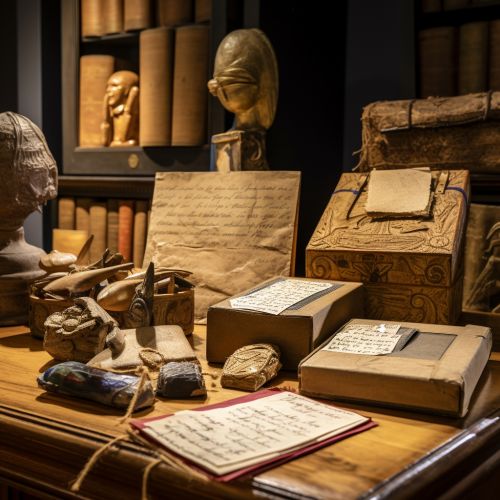Letter (message)
History
The concept of a letter has a long and rich history, tracing back to ancient civilizations. The earliest form of letter writing can be traced back to ancient Egypt around 3100 BC, where scribes would inscribe messages onto clay tablets. These early letters served a variety of purposes, from recording transactions to conveying personal sentiments.


The Greeks and Romans further developed the art of letter writing, with the latter even establishing a formal postal system to facilitate the delivery of these messages. The letters from this period offer invaluable insights into the social, political, and cultural contexts of the time.
During the Middle Ages, letters became an essential tool for communication, particularly among the nobility and clergy. The invention of the printing press in the 15th century revolutionized letter writing, making it more accessible to the masses.
In the 19th and 20th centuries, the advent of the telegraph and telephone respectively, challenged the dominance of the letter as the primary means of long-distance communication. However, the letter retained its importance due to its personal and formal nature.
Types of Letters
There are various types of letters, each serving a unique purpose and adhering to specific conventions. Some of the most common types include:
- Personal Letters: These are informal letters written to friends, family members, or other acquaintances. They are typically characterized by a casual tone and personal content.
- Business Letters: These are formal letters used for professional correspondence. They follow a specific format and are often used to convey official information, make inquiries, or establish formal agreements.
- Cover Letters: These are letters written to accompany a job application or a resume. They provide an opportunity for the applicant to highlight their skills and qualifications for the job.
- Letters of Recommendation: These are letters written to vouch for someone's character or qualifications. They are often used in academic and employment contexts.
Structure of a Letter
While the structure of a letter can vary depending on its type and purpose, most letters follow a general format. This includes:
- Salutation: This is the greeting of the letter, typically addressing the recipient by name.
- Body: This is the main content of the letter, where the writer conveys their message.
- Complimentary Close: This is the sign-off of the letter, often including phrases like "Sincerely" or "Best regards".
- Signature: This is where the writer signs their name, often accompanied by their title or position if it's a formal letter.
Importance of Letters
Despite the prevalence of digital communication in the 21st century, letters continue to hold a significant place in society. They serve as a tangible and personal form of communication, often carrying emotional weight that digital messages cannot replicate. Moreover, they are essential in formal and official contexts, where digital communication may not be appropriate or sufficient.
